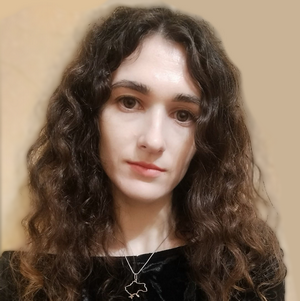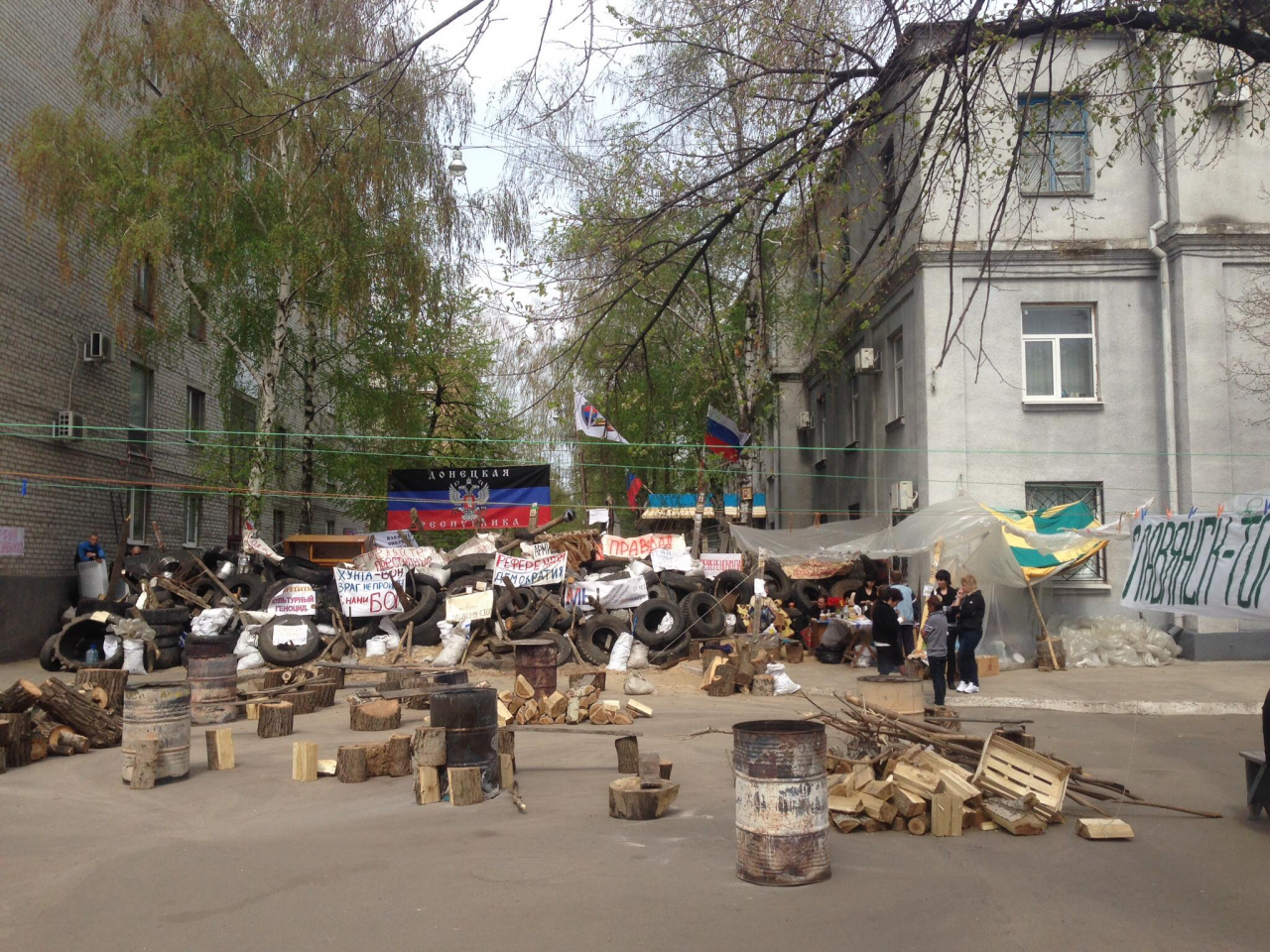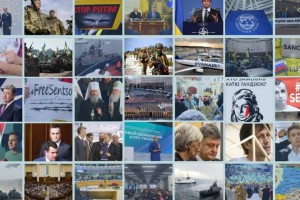
Khrystyna Semeryn,
Researcher at the University of Augsburg (Germany) and journalist, Visiting Scholar at Indiana University (US), Center for Eastern Studies (Poland), and Northwestern University (US). Expert for the Ukrainian Book Institute (since 2020) and the Ukrainian Cultural Foundation (2021/22).
*This text is part of an analytical study by Khrystyna Semeryn in cooperation with Ilko Kucheriv Democratic Initiatives Foundation “Culture against war. Analytical assessment of the state of Ukrainian culture during the period of the full-scale Russian invasion in Ukraine from February 24 to August 31, 2022.”
Culture is the basis on which the idea of the state grows and is maintained. Cultural values are an important component of self-identity, a sense of historical continuity and belonging to the community, as well as people's daily life. Culture is soft power, the soft power of the country. “The battle is won by the army, the economy wins the war, and culture wins immortality,” reads the manifesto of cultural figures and organizations, “Cultural Consolidation for Victory.”
Russian attacks on Ukrainian culture are aimed at destroying our national memory and identity. The article “What Russia should do with Ukraine”, published by the Russian publication “RIA Novosti” on April 3, testified to the frank intention of Russia to carry out the ethnocide of Ukrainians. The occupiers intended to carry out “de-Ukrainization”: to “re-educate” Ukrainian men and women using repressive methods in the ideological, political, cultural and educational spheres. The shot monument to Taras Shevchenko in Borodyanka during the occupation and the destroyed monument to the victims of the Holodomor in Mariupol once again confirmed that the ethnocide is not a figment of the imagination of the authors of the article, but the intentions of the Russian leadership, which are shared by the majority of Russian citizens. British researcher Peter Pomerantsev noted that the Russian Federation seeks to destroy the memory of Ukrainian cities: “This is a war against memory and cultural memory.” That is why cultural resistance to invaders and Russian cultural expansion is as important as armed resistance.
This review analyzes available data on the state of cultural heritage and the overall state of the cultural and creative industries (CCI) during the period of Russian invasion. These are, first of all, sectoral studies of the Ukrainian Cultural Foundation, data from the Ministry of Culture and Information Policy of Ukraine, official reports of the Ukrainian Book Institute, the Museum Crisis Center, the Headquarters for the Rescue of Ukrainian Heritage and others, analytics and statistics from the resources “Detector Media”, “LB.ua”, “Chytomo”, “Forbes”, etc., other data from open sources (social pages, websites of personalities, organizations and companies, registers, statistics, publications of other mass media).
The scale of Russian war crimes against culture
From February 24 to the end of August, according to the Office of the Prosecutor General, the Russian Federation committed more than 27,000 war crimes in Ukraine. Part of them are crimes against culture. The Russian army is actively fighting against Ukrainian museums, theaters and monuments.
As of September 3, the Ministry of Culture recorded half a thousand cases of damage and destruction of cultural objects and institutions. According to Deputy Minister of Culture Kateryna Chuieva, the real figure is much higher, but the losses in the occupied territory cannot yet be traced. In addition, since 2014, there has been a lack of reliable data on the state of cultural heritage in the Russian-occupied Crimea and parts of Donetsk and Luhansk regions.
The damage caused by the Russians to Ukrainian culture can be divided into different groups. This is the partial and total destruction of sites/institutions/objects of culture and cultural heritage (historical buildings, cultural institutions, cemeteries, religious buildings, archaeological sites and objects), destruction of infrastructure and logistics, seizure of property and looting of cultural places, theft of material cultural and artistic values.
These are also crimes against the community: killing and wounding people, stopping or slowing down cultural work in the field, negative impact on the artistic activity of the community (unsatisfactory psychological state, destruction of the living and working environment, lack of opportunities and materials, lack of livelihood, impossibility to continue pre-war activities and crisis reorientation to military projects or non-cultural activities) etc.
Human lives are the greatest irreparable loss. Historian and Zaporizhia museum curator Vyacheslav Zaitsev, ballet soloist of the National Opera Oleksandr Shapoval, poets Hlib Babich and Yurii Ruf, Poltava sculptor and ceramist Sviatoslav Pashynskyi, Lutsk artist Mykhailo Shtyk, Zhytomyr artist Vyacheslav Mishchenko and others died in the ranks of the Ukrainian army. Actor Pavlo Lee died during the evacuation of people from Irpin. After a month of hunger in occupied Bucha, the famous sixty-year-old artist Liubov Panchenko died. Oksana Shvets, Honored Artist of Ukraine and actress of the Youth Theater in Kyiv, was killed by a Russian rocket in her own apartment. Yuri Kerpatenko, the conductor of the Kherson Philharmonic, was killed for refusing to cooperate with the occupiers. In six months, the Russians killed dozens of cultural figures and artists of Ukraine.
Losses of Ukrainian cultural heritage caused by Russian aggression
During the six months of the war, as of the end of August, 361 objects of art and cultural institutions, as well as 142 objects of cultural heritage, were damaged in the country. Among the damaged are 23 monuments of national and 112 of local importance.
Attacks on cultural objects are often targeted. The Russians deliberately destroyed the building of the drama theater in Mariupol, the cinema in Lysychansk, the Hryhorii Skovoroda museum in Kharkiv region, the monument to Shevchenko in Borodianka, the monument to the victims of the Holodomor in Mariupol (with the criminal wording that the genocide of Ukrainians is “disinformation at the state level”) , a plot of the cemetery with burials of ATO warriors in Chernihiv, the Sviatohirsk Lavra (of the Moscow Patriarchate) in the Donetsk region, and many others.
As of the end of August, the largest number of crimes against cultural heritage in the Russian Federation was recorded in Donetsk region (130 episodes, the lion's share - in the destroyed Mariupol), Kharkiv region (Kharkiv and its surroundings), Kyiv region (mostly in Bucha district), Luhansk region, Chernihiv region (mainly Chernihiv and its surroundings). and Sumy region (Okhtyrka district) – in total in 15 regions.
On February 25, the archival division of the Security Service of Ukraine burned down in Chernihiv. In this fire, Ukraine lost about 13,000 files of Soviet repressed people and documents of special services. In six months, 36 museums and nature reserves were damaged or destroyed. The occupiers completely destroyed the Ivankiv Museum of Local History, which housed 25 paintings by the world-famous artist Maria Priymachenko, the National Museum of Hrygori Skovoroda in the village of Skovorodynivka in Kharkiv Region, the Art Museum named after Arkhyp Kuindzhi, the City Museum of Local History in Sumy, the Museum of History and Archeology, the Okhtyrka City Museum of Local History.
The Russians destroy a monumental sculpture, even dedicated to their mythologized World War II. 52 monuments and memorials have already been destroyed. In particular, the invaders shelled Babyn Yar in Kyiv and the memorial in Drobytsky Yar in Kharkiv. On Mount Kremenets near Izium, they destroyed one of the nine Polovtsian women, a unique monument dating back a thousand years.
Historical buildings suffered great destruction: the Museum of Ukrainian Antiquities (the Tarnavskyi house) in Chernihiv, the State Dendrological Reserve “Trostianets” of the 19th century. and Lyzogub Manor in Chernihiv Oblast, “Popov's Manor” in Zaporizhzhia, the legendary “Slovo” building in Kharkiv, the buildings of the Artillery School and the 120-year-old Cadet Corps in Sumy, the historical manor-manege of the 18th century. “Round Yard” in Trostianets, Sumy Oblast, etc. The Drama Theater, the Palace of Culture and most of the historical and cultural buildings in Mariupol, the historical building of the Okhtyrka railway station, the Manor of L. Kening in Trostianets in Sumy Oblast, the Park Gazebo in Chernihiv and other priceless sights were destroyed.
A large number of universities in Kharkiv, Mykolaiv, Mariupol and other cities were destroyed. In addition, educational institutions were relocated from temporarily occupied (hereinafter referred to as) territories. This will certainly affect the state of Ukrainian education and culture.
In six months, 169 religious buildings were damaged by Russian attacks. Among them: the Church of the Nativity of the Blessed Virgin Mary (1862) in the village of Viazhochka in Zhytomyr region, the Holy Dormition Cathedral of the 18th century in Kharkiv, Yeletsky Assumption Monastery of the 12th–19th centuries in Chernihiv, St. George's Church (1873) in Zavorychy in the Kyiv region, the buildings of the Kharkiv Choral Synagogue (1912–1913) and the Sumy Theological Seminary, and one and a half hundred others were damaged or destroyed.
Russian soldiers shot the graves of ATO soldiers at the cemetery in Chernihiv. On the Orthodox Easter, Orthodox Russian rockets damaged part of the Tairov cemetery in Odesa. The unique landscapes of the Ukrainian steppe are under threat. The occupiers are destroying priceless archaeological monuments – barrows, placing fire points on them. According to the “Map of Cultural Losses”, barrows near Davydiv Brid and Druzhbivka in the Kherson region have already been lost.
Russians steal Ukrainian cultural and artistic values. The scale of these crimes is still difficult to assess. Officials assume that part of the state museum fund from the cities of the occupied south ended up in Donetsk. In particular, the works of Arkhyp Kuindzhi, Ivan Aivazovsky and other valuables were taken from the Museum of Local History and the Art Museum in Mariupol to the Donetsk Museum of Local History. It was reported about the robbery of the historical and local history museum in “Popov Manor” in Zaporizhzhia.
The Minister of Culture and Information Policy Oleksandr Tkachenko suggested that the Russians stole a collection of Scythian gold dating back to the 4th century from the Melitopol Local History Museum. B.C. According to the information of the Crimean Tatar Resource Center, 1,841 pieces of museum objects (among them ancient weapons, gold, coins) were stolen. The Prosecutor General's Office opened a criminal proceeding based on this fact.
In October, it became known that the occupiers were preparing to remove Ukrainian museums from the temporarily occupied Crimea. During the full-scale war, they stole valuables from 40 Ukrainian museums. Damages to Ukraine are estimated at hundreds of millions of dollars.
The occupying forces not only physically destroy buildings and spatial objects, but also commit crimes against intangible culture and heritage. About a hundred Ukrainian libraries were destroyed and 221 were damaged, for example, the public library in Chernihiv and the Kharkiv State Scientific Library named after V. Korolenko. A third of them are located in Donetsk region, 24% in Kyiv region, and 9% each in Mykolaiv region and Kharkiv region. In 21 libraries, not a single document was saved, and 101 institutions suffered large losses of their funds. On the so-called territories, Russians take away and destroy Ukrainian books from libraries and cultural institutions. The occupiers' violence against the Ukrainian language, which is part of the genocide against the Ukrainian people, requires a separate study.
Strategies of the central government in the field of culture
The Great War deepened the crisis and exposed long-overdue problems in Ukrainian culture.
Immediately after the invasion, culture lost its already not too generous budget funding. The Ukrainian Cultural Fund (hereinafter referred to as the UCF) transferred the planned UAH 637,281 for the needs of the defense sector. This is UAH 583,281 according to the Cabinet of Ministers’ resolution and another UAH 44,021 through the subsequent reduction of expenses. This decision was generally supported by 82% of cultural figures associated with the Fund (applicants, grantees, experts).
In May, an offer appeared in the parliament to remove restrictions on expenses for the work of the Fund itself. According to the norm of its work during martial law, expenses were cut by 90%, to 16% of pre-war profits for the year. Therefore, due to a lack of funds, the institution risked dismissing part of the staff and stopping work. This law was adopted in July.
Meanwhile, there was criticism in the groups of independent experts. During the war, culture vitally needs funds for systematization, digitization, protection, shelter, evacuation of objects of cultural heritage and cultural values, reconstruction and repair, implementation of fire safety of buildings and premises, restoration of communications and technical support, training of personnel, arrangement of shelters and protective buildings, support of cultural activities of the community, organizations and institutions, implementation of wartime projects, payment of logistics costs, etc.
Foreign countries offer great help in saving cultural heritage and community support in Ukraine. The state now has objective difficulties with financing, because defense is very expensive, and other areas of life and social benefits still need to function. Therefore, the support of foreign friends is especially valuable. For example, in March 26, Polish museums founded the Committee to Help Museums of Ukraine. In April, Germany created the Network for the Protection of Cultural Values in Ukraine. At the same time, the UСF organized a fundraising campaign among Ukrainian and foreign audiences to support cultural workers and cultural and artistic projects.
In July-August, the UСF held a competition for scholarships for the restoration of cultural and artistic activities with a budget of 4.5 million hryvnias. At the end of August, with the support of UCF, the Agency for Regional Development of the Tavria Union of Territorial Communities together with the charity foundation “This Craft” organized an art residency “Kherson region is Ukraine” in Uman.
Against the background of lost and damaged museum and archival collections, the question arose about the role of the Ministry of Culture and Information Policy of Ukraine. The management of many museums and cultural institutions claimed [1] that before the invasion, the Ministry of Culture ignored their requests for instructions in case of hostilities. At the beginning of the year, the position of the ministry in preparation for a possible attack was discussed in the museum Facebook community “Museums. Debating society”. It is administered by Kateryna Chuieva, Deputy Minister of Culture. In the end, the Minister of Culture Oleksandr Tkachenko stated that the Mariupol authorities and museums refused to evacuate the funds. At the same time, the Kharkiv Literary Museum showed a successful example of evacuating valuables in cooperation with the Ministry of Culture.
Employment in the cultural and creative sphere during the war
The war caused a shortage of money and increased unemployment in the culture. Direct economic losses are associated with a drop in production and sales, reduction and insolvency of the client base, destroyed logistics, lack of materials and work space, respectively, financial difficulties, downtime, etc.
Before the war, the share of creative industries in the economy gradually increased and amounted to 4% in 2020. Currently, Ukrainian business expects a 46% reduction in profits compared to 2021 figures. At the same time, since February 24, 49% of enterprises have stopped completely or almost completely, according to data from the Advanter Group study with the support of the Ministry of Digital Affairs.
In the above-mentioned poll of the UCF from the beginning of April, it is stated that 80% of representatives of culture continued to work in Ukraine. 43% of them feared the loss of jobs due to the destruction of cultural infrastructure. 56% of respondents expected a lack of funds in culture due to the redirection of resources to protect the country from the invaders. 49% assumed that cultural industries would lose many specialists due to military stagnation. At the same time, 57% of people agreed with the opinion that the war will contribute to the search for new sources of funding for cultural activities.
The data of the second poll conducted by UCF in the first half of June showed that at least 37% of the 740 respondents have difficulties with employment. In particular, 15% lost their jobs, 3% had their working conditions and pay changed, and 22% kept their jobs only formally. 5% of cultural workers joined the Armed Forces of Ukraine. At the same time, 35% of respondents noted the revitalization of businesses, institutions and enterprises, which coincides with the geography of the liberation of the occupied territories. Every fifth person noted the loss of workers, partial payment of wages and layoffs of enterprises as consequences of the war.
Conclusions
So, from February to October 2022, during eight months of full-scale war, the Russian army committed more than half a thousand war crimes against Ukrainian culture. In particular, it destroyed and damaged half a thousand objects of Ukrainian culture and cultural heritage, killed more than thirty Ukrainian artists and took away many cultural and artistic values of Ukraine from the occupied territories. In the issue of evacuation and protection of values and support of the artistic community from the first days of the war, grassroots initiatives of activists and public organizations, and then foreign support, played the main role. Some of the participants of the CCI note the ineffectiveness of the work of the central authorities in the field of culture. During this time, the cultural and creative industries faced a lack of funding, the loss of paying clientele, the destruction and/or occupation of property and premises, financial losses, reductions in staff and salaries, problems with logistics and resources. Many small businesses have been forced to close, and large ones are unable to fully reopen. At least 37% of people employed by CCI lost their source of income after February 24 (due to real or “formal” downsizing). Despite this, Ukrainian culture resists the invaders and recovers.
[1] This was stated by Olena Honcharuk, the acting head of the Dovzhenko Center; Leila Ibrahimova, the director of the Melitopol Museum; Yulia Pishchanska, the director of the Dnipro National Historical Museum named after Dmytro Yavornytsky; Andrii Helmintinov, director of the Lebedyn Art Museum; Serhiy Laevsky, director of the Chernihiv Regional History Museum named after Vasyl Tarnovsky; Veronika Sklyarova, program director of the Parade-fest festival in Kharkiv and others.
Photo: from Facebook communities








